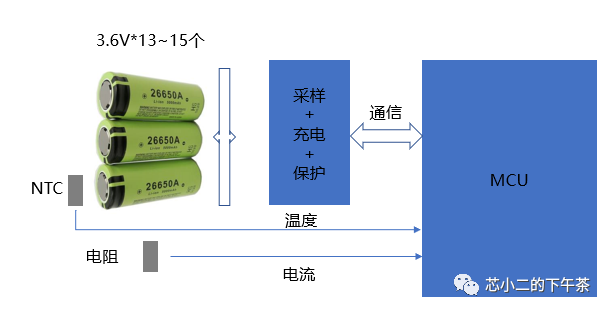A public account dedicated to chips, application systems, and marketing skills
The second part of the energy storage series; the whole series is estimated to have 20~30 articles;
Everyone has a basic concept of energy storage. Let's analyze the core points of the energy storage system from the application of lithium batteries for two-wheeled electric vehicles.
Let's first look at the photos of the electric vehicle battery and its characteristics
First of all, you need to know the capacity of the battery so that you can calculate how far you can run; while the capacity of the battery is calculated based on the characteristics of the battery cell, you need to know the voltage of the battery cell;
As the above parameters, the battery capacity is 48V*12AH;
The battery needs to be charged when it is used up, so you need a circuit to charge the battery; in order to prevent the battery from being overcharged and affecting the performance of the battery, you need to have overcharge protection;
As above parameters, battery over-discharge and over-charge protection voltages are 2.7V and 4.2V respectively
The figure below is the battery parameters
Generally, the voltage of a lithium battery is 3.6V. Electric vehicles such as electric vehicles need to use battery inverters to drive motors. The voltage is definitely not enough, so multiple batteries need to be connected in series;
As the above parameters, the battery capacity is 48V/3.6V=13.3
There is a set of algorithms for the calculation of battery capacity. The algorithm needs to understand the discharge/charge current of the battery, so a current sampling circuit is required;
The SOC algorithm for battery capacity calculation will be introduced later;
In order to ensure safety, the temperature of the battery needs to be monitored;
Well, with these concepts, let's draw a simple block diagram first

With this picture, we can further analyze the key chips and key indicators in the system;
First, an electric vehicle lithium battery management system disassembly diagram

The next article will introduce the battery analog front-end AFE, MCU, operational amplifier and other chips;
Welcome to pay attention to the official account and go deep into the chip industry chain together;

Xin Xiaoer's Afternoon Tea
Focus on the daily life of chip students, and have a cup of afternoon tea every week to create Whampoa College for chip students;
No public